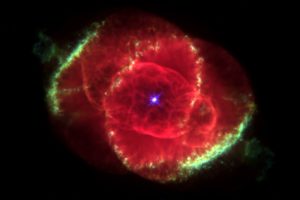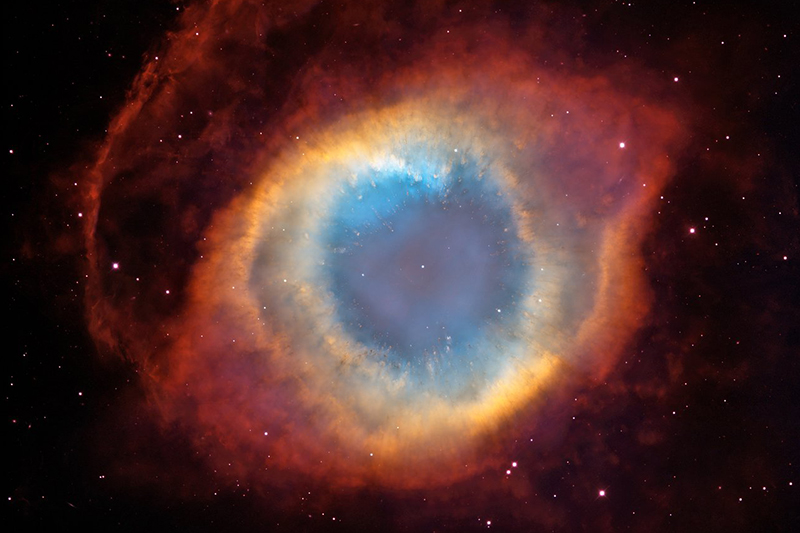What is a planetary nebula?

It is what remains of a star in the final stages of its life. In those with between 0.08 and 8 initial solar masses, after having spent a large part of their life in the main sequence, their fuel begins to run out and they begin a series of reactions that lead them to become a red giant star, causing them to collapse. expand several times its original size. When this happens, the star becomes unstable and inevitably heads towards its collapse, a process in which the star expels its outer layers, leaving in its center a small white dwarf, very dense and maintained by a process called repulsion between electrons.
The ejected layers are composed mainly of hydrogen, while the white dwarf emits UV radiation; therefore, the hydrogen atoms ionize (expel their electrons) and in the process emit visible photons, which together produce the beautiful structures common to planetary nebulae (by the way, the term "planetary" only refers to the fact that their shape is usually spheroidal, similar to a planet).
The chain's mistake is to mention that this phenomenon occurs once every 3,000 years. In reality, many planetary nebulae are known, duly cataloged and each one sporting a particular structure. The time it takes for a star to become a planetary nebula is directly related to its initial mass, since the lower the mass, the longer it will take to consume its fuel; The greater the mass, the faster it will be. To give a concrete example, the destiny of the Sun will be to become a planetary nebula. Our star is already 5 billion years old, and it has another 5 billion years left before its fuel begins to run out. The process between the final ejection of the outer layers and its state as a planetary nebula is very slow and gradual, it does not appear instantly.


